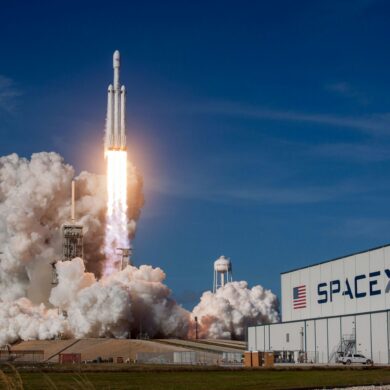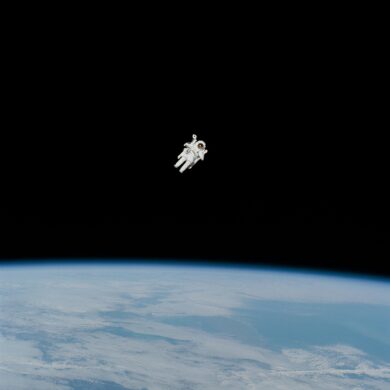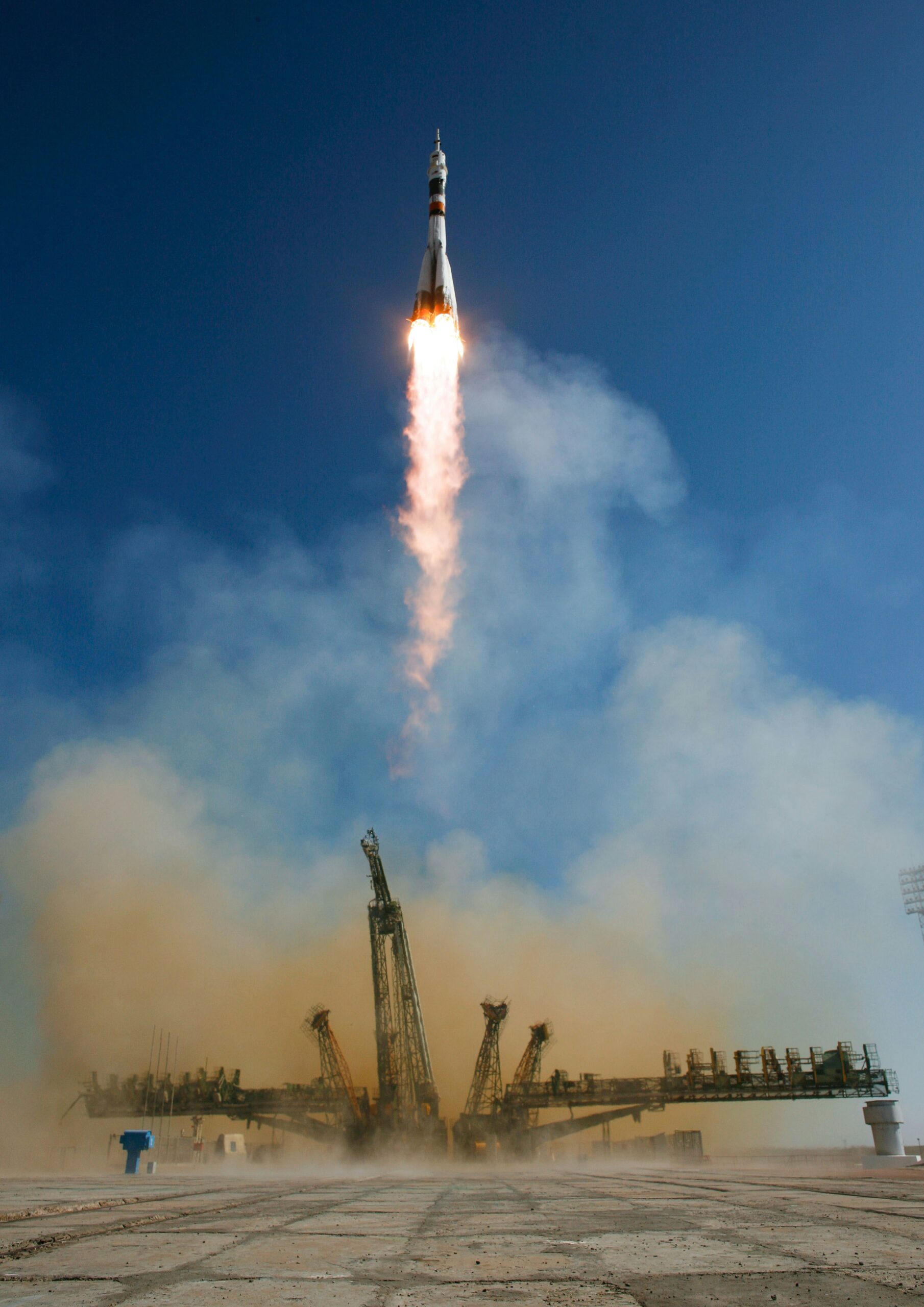Every day, thousands of satellites orbit silently above our heads, enabling everything from GPS navigation and weather forecasts to streaming services and global communications. But what happens when these technological marvels reach the end of their operational lives? The answer is more complex—and potentially catastrophic—than most people realize.
The Lifecycle of a Satellite
Before we can understand satellite death, we need to appreciate satellite life. A typical communications satellite might live for 15 to 20 years, though some missions are considerably shorter and others manage to exceed their planned lifespan. During their operational years, these spacecraft perform delicate orbital ballet, maintaining precise positions and orientations while enduring the harsh conditions of space: extreme temperature fluctuations, micrometeorite impacts, and relentless radiation.
When a satellite reaches the end of its functional life, it doesn’t simply wink out of existence. Unlike organisms on Earth that decompose and return their matter to the ecosystem, dead satellites remain exactly where they died—frozen in orbit, potentially for decades, centuries, or even millennia depending on their altitude.
The fate of a dying satellite depends largely on where it operates. For spacecraft in low Earth orbit (LEO)—typically between 160 and 2,000 kilometers above Earth’s surface—atmospheric drag, however minimal, eventually pulls them downward. Given enough time, these satellites will reenter Earth’s atmosphere, burning up in a fiery descent that poses minimal risk to people on the ground. However, this process can take years or even decades.
For satellites in higher orbits, particularly geostationary orbit at approximately 35,786 kilometers above the equator, the situation is radically different. At this altitude, there’s virtually no atmospheric drag. A dead satellite in geostationary orbit will remain there essentially forever, drifting slowly and becoming a permanent fixture in space.
“We’re effectively creating a new layer around our planet—one made not of atmosphere, but of defunct machinery and debris.” – Dr. Moriba Jah, Space Environmentalist
The Graveyard Orbit Solution
To address the problem of dead geostationary satellites cluttering valuable orbital real estate, space agencies and satellite operators have established what’s known as a “graveyard orbit” or “disposal orbit.” This is a region of space about 300 kilometers above the geostationary belt where defunct satellites are deliberately moved at the end of their operational lives.
The process of reaching the graveyard orbit requires careful planning. Before a satellite completely exhausts its fuel reserves, operators must retain enough propellant to execute one final maneuver: boosting the spacecraft into this higher, unused orbit. This maneuver typically requires the satellite to increase its altitude by about 300 kilometers—a relatively modest change that nevertheless removes it from the congested and commercially valuable geostationary belt.
Think of it as a cosmic retirement home, except the residents never interact, never move, and will remain there for millions of years. Currently, hundreds of satellites occupy this graveyard orbit, and the population continues to grow with each passing year.
However, this solution is far from perfect. Not all satellite operators comply with end-of-life disposal guidelines. Some satellites experience catastrophic failures before they can be moved. Others simply run out of fuel unexpectedly, leaving them stranded in geostationary orbit as permanent obstacles. According to recent estimates, approximately 20-30% of satellites in geostationary orbit fail to reach their designated graveyard, instead remaining as hazards in one of the most valuable regions of near-Earth space.
The Low Earth Orbit Problem
While geostationary satellites have their graveyard orbit, the situation in low Earth orbit is simultaneously better and worse. The good news is that atmospheric drag naturally removes debris over time. The bad news is that “over time” can mean decades, and during those decades, dead satellites in LEO pose significant collision risks.
LEO is where the majority of satellite activity occurs. It’s home to the International Space Station, Earth observation satellites, telecommunications constellations like Starlink and OneWeb, and countless other spacecraft. The sheer density of objects in this region makes it a cosmic shooting gallery where collision risks are highest.
When a LEO satellite dies, responsible operators attempt to implement one of two end-of-life strategies. The first is a controlled deorbit, where the satellite uses its remaining fuel to lower its orbit enough that it will reenter the atmosphere within 25 years—the internationally recommended timeline. The second option is to move the satellite to a lower orbit where natural atmospheric drag will accelerate its demise.
However, many satellites lack the capability or fuel reserves to execute these maneuvers. Small satellites, known as CubeSats, often launch without any propulsion system at all, making controlled disposal impossible. These tiny spacecraft—some no larger than a loaf of bread—simply drift wherever their final orbit takes them, slowly descending over years until they eventually burn up.
The problem is growing rapidly. In 2023 alone, over 2,000 satellites were launched into orbit, with the majority heading to LEO. Companies like SpaceX plan to launch tens of thousands more satellites in the coming decade. While modern satellites are designed with end-of-life disposal in mind, the sheer number of objects being added to LEO raises troubling questions about long-term sustainability.
Space Debris: The Hidden Threat
Dead satellites are only part of the problem. The real danger lurking in Earth orbit is space debris—fragments of defunct spacecraft, spent rocket stages, and the detritus of more than six decades of space activity. This debris ranges in size from entire rocket bodies weighing several tons to tiny paint flecks smaller than a millimeter across.
According to NASA’s estimates, there are approximately 23,000 pieces of debris larger than 10 centimeters currently being tracked in Earth orbit. There are roughly 500,000 pieces between 1 and 10 centimeters, and over 100 million pieces smaller than 1 centimeter. The smaller fragments aren’t individually tracked, but their collective presence creates an invisible minefield for operational spacecraft.
The danger posed by these fragments cannot be overstated. In low Earth orbit, objects travel at approximately 7 to 8 kilometers per second—roughly 17,500 miles per hour. At these velocities, even tiny pieces of debris carry tremendous kinetic energy. A fleck of paint just a few millimeters across strikes with the force of a small bullet. A fragment the size of a marble could disable a satellite or penetrate a spacecraft’s hull. Anything larger poses catastrophic risk.
“In space, there’s no such thing as a minor collision. Even a fragment smaller than your fingernail can completely destroy a satellite.” – ESA Space Debris Office
The International Space Station regularly performs collision avoidance maneuvers, adjusting its orbit to dodge tracked debris. In 2021, the ISS crew had to shelter in their docked spacecraft as a debris field from a Russian anti-satellite test passed uncomfortably close to the station. These events are becoming more frequent, not less.
How We Got Here: A Brief History of Space Collisions
The space debris problem didn’t emerge overnight. It’s the accumulated consequence of decades of launches, failures, and a few particularly destructive events that exponentially increased the amount of debris in orbit.
One of the most significant debris-creating events occurred in 2007 when China conducted an anti-satellite missile test, deliberately destroying one of its own weather satellites. This single event created over 3,000 trackable pieces of debris, many of which remain in orbit today. The debris cloud from this test has been responsible for numerous conjunction warnings and continues to pose risks to operational satellites.
In 2009, the commercial communications satellite Iridium 33 collided with the defunct Russian military satellite Cosmos 2251. This was the first-ever collision between two intact satellites and it generated more than 2,300 pieces of trackable debris. Both satellites were completely destroyed in the impact, their remains scattered across multiple orbits.
These catastrophic events demonstrate a frightening reality: each collision creates more debris, and more debris increases the probability of future collisions. It’s a self-reinforcing cycle that scientists warn could spiral out of control.
The Kessler Syndrome: Our Nightmare Scenario
In 1978, NASA scientist Donald Kessler proposed a frightening scenario that now bears his name: the Kessler Syndrome. His theory suggested that as the density of objects in low Earth orbit increases, the probability of collisions between objects also increases. These collisions would create more debris, leading to more collisions, creating even more debris in a runaway cascade effect.
In Kessler’s worst-case scenario, this cascade could render entire orbital regions unusable for decades or even centuries, effectively trapping humanity on Earth. Imagine being unable to launch new satellites without them being destroyed by debris within months or years. GPS systems would degrade without replacement satellites. Weather forecasting would become less accurate. Global communications would suffer. Earth observation capabilities—crucial for monitoring climate change, natural disasters, and agricultural conditions—would be severely compromised.
The terrifying aspect of Kessler Syndrome is that it might be self-sustaining even if we completely stopped launching new objects into space. Once initiated, the cascade would continue on its own momentum, with each collision creating exponentially more debris.
Are we already experiencing the early stages of Kessler Syndrome? The answer is debated among experts. Some believe we’re approaching a critical threshold, while others argue that we still have time to implement solutions before reaching a point of no return. However, there’s near-universal agreement on one point: the problem is serious, it’s growing, and action must be taken soon.
Recent studies have identified several “critical zones” in LEO where debris density is particularly high and collision probability is elevated. These regions, between 700 and 1,000 kilometers altitude, are already experiencing increased conjunction warnings—alerts issued when two objects are predicted to pass dangerously close to each other.
“The Kessler Syndrome isn’t science fiction anymore. We’re seeing collision probabilities increase year over year. The question isn’t if we’ll face a major cascade event, but when—and whether we can prevent it.” – Dr. Hugh Lewis, Head of the Astronautics Research Group
The Economics of Dead Satellites
Beyond the safety concerns, dead satellites represent a significant economic issue. Each piece of debris in a valuable orbit is essentially squatting on prime real estate. Geostationary orbital slots are assigned by international agreement and are highly coveted—there’s only room for a limited number of satellites in geostationary orbit without them interfering with each other’s signals.
When a satellite dies but remains in its assigned slot, that position becomes unavailable for new satellites. This creates opportunity costs for satellite operators and limits the expansion of services that depend on geostationary satellites, including broadcast television, certain weather monitoring systems, and some communications networks.
The insurance industry has also taken notice. Satellite insurance premiums have increased as collision risks have grown. Some insurers now require detailed end-of-life disposal plans before they’ll underwrite a satellite mission. The failure to properly dispose of a dead satellite can result in significant financial liability if that satellite later causes a collision.
The cost of avoiding debris is also substantial. Satellite operators must constantly monitor conjunction warnings and perform collision avoidance maneuvers when necessary. Each maneuver consumes fuel, shortening a satellite’s operational lifespan. For a constellation of satellites, these maneuvers can occur multiple times per week, with each one carrying both immediate costs and long-term operational impacts.
Current Cleanup Missions: Fighting Back Against the Debris
Recognizing the severity of the space debris problem, governments and private companies have begun developing technologies to actively remove debris from orbit. These “space janitor” missions represent a new frontier in space operations, tackling challenges that have never been attempted before.
The European Space Agency has commissioned ClearSpace-1, a mission planned to launch in the mid-2020s with the goal of capturing and deorbiting a piece of debris—specifically, a payload adapter that was left in orbit after a 2013 launch. The mission will demonstrate technologies for rendezvous, capture, and controlled deorbit of uncooperative objects.
Japan’s Aerospace Exploration Agency (JAXA) has experimented with electrodynamic tether technology, which uses long conducting cables to generate electromagnetic forces that can alter an object’s orbit. While initial tests faced challenges, the concept remains promising for future debris removal efforts.
Several private companies have entered the space debris removal business. Astroscale, a Japanese company, successfully demonstrated rendezvous and proximity operations with its ELSA-d mission, where one spacecraft practiced approaching and magnetically capturing another cooperative spacecraft. The company is now working on missions to remove actual debris.
RemoveDEBRIS, a European project, tested multiple debris removal technologies including a net to capture tumbling objects, a harpoon to spear larger pieces of debris, and a drag sail to accelerate atmospheric reentry. These tests, conducted in 2018-2019, successfully demonstrated proof-of-concept for several removal techniques.
Other proposed solutions include ground-based lasers that could alter debris trajectories by ablating material from their surfaces, specialized “garbage truck” satellites designed to collect multiple pieces of debris on a single mission, and robotic arms for grasping and deorbiting defunct satellites.
However, all these technologies face significant challenges. Debris removal is expensive—potentially costing tens of millions of dollars per object removed. The technical challenges of approaching, capturing, and safely deorbiting uncooperative, tumbling objects are immense. There are also unresolved questions about who should pay for debris removal, particularly for older debris from defunct programs or bankrupt companies.
International Law and the Politics of Space
The legal framework governing space debris is complex and, in many ways, inadequate for current challenges. The Outer Space Treaty of 1967 establishes that countries bear international responsibility for objects they launch into space, but it doesn’t clearly address liability for debris or mandate end-of-life disposal.
The Space Liability Convention of 1972 establishes that a launching state is liable for damage caused by its space objects, but enforcement mechanisms are weak and claims processes are cumbersome. Only once has this convention been invoked—when debris from a Soviet satellite crashed in northern Canada in 1978.
In recent years, the Inter-Agency Space Debris Coordination Committee (IADC) has developed guidelines for debris mitigation, recommending that satellites in LEO be deorbited within 25 years of mission completion and that geostationary satellites be moved to graveyard orbits. However, these are guidelines, not enforceable regulations, and compliance is voluntary.
The United Nations Committee on the Peaceful Uses of Outer Space has developed Long-term Sustainability Guidelines, but again, these lack enforcement mechanisms. Many spacefaring nations have implemented their own national regulations requiring debris mitigation measures, but standards vary significantly between countries.
The political dimension of space debris is complicated by security concerns. Anti-satellite weapons testing has been one of the most prolific sources of debris, but nations are reluctant to limit their military capabilities. The dual-use nature of many space technologies—useful for both civilian and military applications—makes international cooperation challenging.
There’s also the question of historical responsibility. Much of the debris currently in orbit was created decades ago by programs that are now defunct. Should current operators bear the full cost of cleaning up debris from past eras? How should costs be allocated fairly? These questions remain contentious.
“Space doesn’t belong to any one nation, but we’re all affected by the debris problem. Finding solutions will require unprecedented international cooperation.” – Simonetta Di Pippo, Former Director of the UN Office for Outer Space Affairs
What You Can Do: The Path Forward
The space debris problem might seem distant from everyday life, but it affects everyone who uses GPS, watches satellite television, checks weather forecasts, or benefits from Earth observation data. Here’s what various stakeholders can do to address this crisis:
For the Space Industry:
Satellite operators must prioritize end-of-life disposal in their mission planning. This means designing satellites with deorbit capabilities, reserving sufficient fuel for disposal maneuvers, and implementing these plans reliably. The industry should embrace higher standards than current regulations require and work toward zero debris missions.
For Governments:
Policymakers need to strengthen regulations around satellite disposal and provide funding for debris removal research and operations. International cooperation must be enhanced, with binding agreements replacing voluntary guidelines. Licensing processes should incorporate stringent debris mitigation requirements.
For Researchers:
Scientists and engineers must continue developing innovative debris removal technologies and improving our ability to track and predict debris behavior. Better modeling of the debris environment will help us understand risks and prioritize removal efforts.
For the Public:
Citizens can advocate for responsible space practices and support policies that prioritize long-term sustainability over short-term gains. Understanding the issue is the first step toward building political will for meaningful action.
The Stakes Have Never Been Higher
We stand at a critical juncture in the history of space exploration. The decisions we make in the next decade will determine whether space remains accessible for future generations or becomes an unusable debris field. The promise of space—scientific discovery, technological advancement, and potential solutions to Earth’s challenges—hangs in the balance.
The good news is that we have the technology to address this problem. Debris can be tracked, collision risks can be managed, and removal technologies are being developed. What we need now is the collective will to treat space as a shared resource that requires careful stewardship.
When satellites die, they don’t simply disappear. They leave behind a legacy that will persist for decades, centuries, or longer. Whether that legacy becomes a cautionary tale about humanity’s inability to manage its technological impacts or a story of successful problem-solving will depend on actions taken now.
The next time you check your GPS, stream a show via satellite internet, or see a weather forecast, remember that these services depend on our ability to keep space operational and safe. The graveyard orbit grows larger every month. The debris population increases with each passing year. The clock is ticking, and space—unlike terrestrial environments—offers no natural process to absorb our mistakes.
The question “What happens when satellites die?” has an answer we must confront: They haunt us, literally orbiting overhead as reminders of our technological ambitions and our responsibility to manage their consequences. How we respond to this challenge will define our future relationship with space and determine whether the orbital environment remains a resource or becomes a permanent hazard.
The space age has given humanity unprecedented capabilities, but with those capabilities comes unprecedented responsibility. Managing satellite death is part of that responsibility—one we can no longer afford to ignore.







